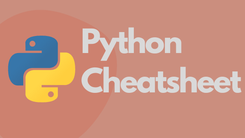Markdown Cheatsheet
When it comes to writing content for the web, Markdown has become an incredibly popular and efficient way to format text. Markdown is a lightweight markup language that allows you to add formatting elements to plain text, making it easier to create structured and visually appealing documents. Whether you\'re a seasoned Markdown user or just starting out, having a cheatsheet at your disposal can be immensely helpful. In this article, we\'ll provide you with a comprehensive Markdown cheatsheet to assist you in formatting your text effectively.
Table of Contents
Headers
Headers allow you to organize your content into different sections or levels. Markdown provides several options for creating headers:
Emphasis
Emphasizing certain parts of your text can help draw attention or convey importance. Markdown offers a couple of ways to add emphasis:
Lists
Markdown allows you to create both ordered and unordered lists
Links
Including links in your Markdown document is essential for referencing external resources. Here\'s how you can create hyperlinks:
Images
To include images in your Markdown document, use the following syntax:
Blockquotes
If you want to include a quote or citation in your document, you can use blockquote:
Code Blocks
Markdown allows you to include code snippets or blocks:
Tables
Tables can be created in Markdown by defining the headers and using pipes (|) to separate the columns:
Horizontal Rules
To create a horizontal rule or divider, use three or more hyphens, asterisks, or underscores:
Escaping Characters
Sometimes, you may need to display characters that have special meaning in Markdown. To escape these characters, use a backslash ():

